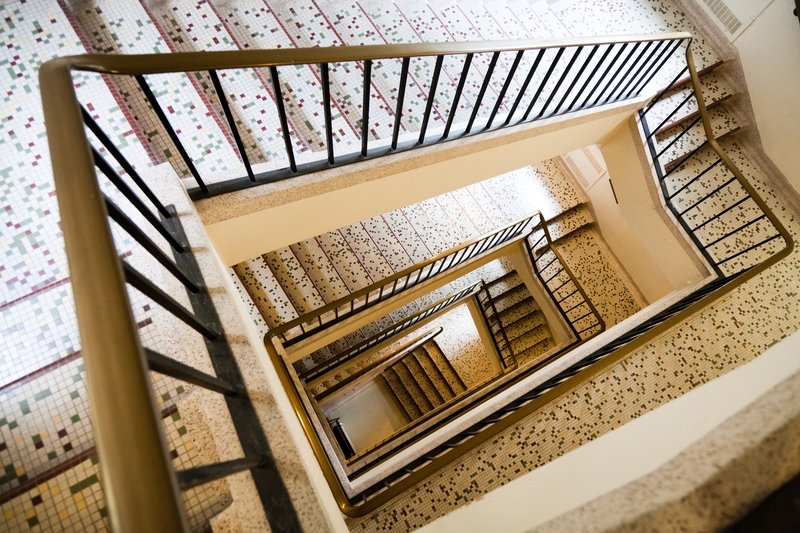Ensuring Safe Handling of Your Bed and Mattress During a Move
Posted on 19/06/2025
Moving can be a complex process, especially when it comes to transporting larger, more delicate household items like your bed and mattress. Ensuring safe handling and proper packing are paramount not only for preserving the quality of your bedding but also for making your relocation as smooth and efficient as possible. Whether you're a seasoned mover or this is your first big transition, understanding the importance of securely moving your bed and mattress will ultimately lead to a restful night's sleep in your new home.
Why Safe Handling of Your Bed and Mattress Matters
Your bed and mattress are significant investments. Mattresses, whether memory foam, latex, hybrid, or innerspring, are designed to offer years of comfort and support. Unsafe handling during a move can cause:
- Structural damage to mattress coils or foam layers
- Tears, stains, or soiling from improper packaging
- Unexpected damage to the bed frame or headboard
- Exposure to dust mites, allergens, and dirt
Taking the right steps to protect these items ensures both hygiene and longevity, and can save you considerable expense and inconvenience down the line.

Preparation: Essential Steps Before You Move Your Bed and Mattress
1. Gather the Proper Moving Supplies
Before embarking on the moving process, assemble everything you'll need for safe bed and mattress handling. Some basic supplies include:
- Mattress bags (preferably heavy-duty and waterproof)
- Moving blankets or thick bubble wrap for frames and headboards
- Furniture pads and plastic sheeting
- Packing tape and securing straps
- Allen wrenches and screwdrivers for disassembly
- Permanent markers for labeling parts
2. Clean and Inspect Your Mattress and Bed
Prior to packing, thoroughly clean your mattress and bed components. This helps prevent transferring dust, bacteria, or allergens to your new home.
- Vacuum both sides of the mattress using an upholstery attachment
- Spot-clean stains with a mild detergent
- Allow the mattress and bed frame to dry completely before packing
- Inspect for damages or loose hardware and tighten or repair as needed
3. Disassemble the Bed Frame Properly
Most beds are too large to move in one piece and require partial or complete disassembly. Follow your manufacturer's instructions or use these general guidelines:
- Remove bedding, pillows, and detachable headboards or footboards
- Unscrew and carefully set aside side rails, slats, and hardware in a labeled bag
- Cushion delicate wood or metal parts with blankets or bubble wrap
- Bundle long parts together for easier handling
Packing: The Right Way to Secure Your Bed and Mattress for Transit
1. Protecting Your Mattress
*Mattresses are particularly susceptible to damage, stains, and bending.* The best way to move your mattress safely is by enclosing it in a high-quality mattress bag:
- Slip your mattress into a tightly fitted mattress bag and remove excess air before sealing
- Double-bag if possible for water and tear resistance
- If using a moving truck, always place your mattress on its side, not flat or stacked under heavy objects
- Never bend or fold a mattress unless specifically allowed by the manufacturer
For added protection, wrap the mattress bag in moving blankets to cushion against impacts. Label the bag to indicate "Mattress -- Handle With Care."
2. Safeguarding Bed Frames and Components
Scratches, dents, or missing parts are common mishaps when handling bed frames during a move. To avoid them:
- Wrap wood and metal components in moving blankets or bubble wrap
- Tape all hardware pieces in a small bag and attach it to the frame
- Place headboards and footboards upright and secure them with straps
- Never rest heavy items against fragile bed components in the moving truck
Moving Day: How to Transport Your Bed and Mattress Safely
Proper bed and mattress transport is all about planning and teamwork. Keep these best practices in mind on moving day:
1. Lifting and Carrying Techniques
Use the right lifting techniques to avoid injury and damage:
- Always lift beds and mattresses with at least two people
- Bend at the knees and keep your back straight
- Carry the mattress on its side for easier maneuvering around corners
- Use moving straps or dollies for heavy frames
2. Loading Into the Moving Vehicle
Loading order makes a difference when ensuring safe handling of your bed and mattress during a move:
- Load the mattress last for quick access at your new location
- Secure upright mattresses with moving straps to prevent sliding
- Position frames along the sides or flat on the truck floor, away from heavier items
- Keep all bed parts grouped together to simplify reassembly
3. Transportation Considerations
If you're using a personal vehicle, ensure the bed and mattress fit without forcing them through narrow spaces or folding them. If hiring professional movers, communicate any specific handling instructions upfront.
Unpacking and Reassembling: A Careful Approach for Stress-Free Setup
Once you arrive at your new home, proper handling doesn't stop. The way you unpack and reassemble your bed and mattress also impacts their longevity and performance.
1. Unpacking with Care
- Gently cut away moving blankets and mattress bags with scissors
- Inspect the mattress for any damage or stains before unwrapping completely
- Allow the mattress to air out for a few hours, particularly if wrapped tightly or stored for long
- Dispose of packing materials responsibly and recycle where possible
2. Reassembling Your Bed Frame
- Lay out all hardware and components for easy access
- Follow instructions for reassembly, tightening all bolts and screws securely
- Make sure the frame is stable before placing the mattress on top
- Adjust the headboard and footboard for even alignment
3. Final Checks and Setup
- Test for squeaks, wobbles, or instability--re-tighten as needed
- Place a mattress protector before adding your sheets for ongoing protection
- Arrange pillows and bedding to your liking
This step-by-step approach ensures your bed and mattress remain in pristine condition, providing comfort from your first night onward.
Professional Moving Services: When Should You Call the Experts?
While moving a bed and mattress is often manageable, there are scenarios where hiring professional movers is the safest option:
- Your mattress is oversized, heavy, or specialty (such as split-king or adjustable bases)
- Access to your new or old home is restricted (narrow hallways, high floors, staircases)
- Time constraints or physical limitations prevent DIY moving
- You want the peace of mind that comes from insured professional handling
Experienced movers have optimal tools and techniques for transporting mattresses and beds without risk. If you choose this route, request references, ask about handling procedures, and verify their insurance coverage for your belongings.
Tips for Ensuring Safe Handling of Your Mattress and Bed When Moving
- Measure doorways, stairwells, and elevators before the move--save time and avoid damage
- Use the right size mattress bag for your specific mattress type
- Store components together and label everything clearly
- Never drag or push mattresses--always carry
- If storing short-term, keep the mattress laying flat in a dry, ventilated space
Implementing these bed and mattress moving safety tips will help maintain your bedding investment for years to come.
Common Mistakes to Avoid When Handling Beds and Mattresses During a Move
- Skipping protective packaging: Exposes mattresses to dirt, moisture, and insects
- Improper lifting: Can cause both injury and accidental drops
- Bending or folding foam mattresses: Permanently damages internal layers
- Losing hardware: Delays reassembly and can result in instability
- Stacking heavy items on mattresses: Leads to compression, sagging, or irreversible damage

Frequently Asked Questions About Safe Mattress and Bed Moving
Can I roll up my mattress for moving?
Some foam mattresses are designed to be compressed and rolled, but traditional spring or hybrid mattresses should never be rolled or folded unless specified by the manufacturer. Always check the manual or warranty details before attempting.
What if my mattress is stained or damaged after the move?
Report any issues to your moving company if you used professional services. For DIY moves, attempt to spot-clean stains with mild cleaners or contact the manufacturer for further instructions. Warranties may be voided by specific types of damage, so be thorough during packing.
How do I move a king-size bed and mattress?
Enlist extra help for king-size beds, as their size and weight can be unwieldy. Disassemble the frame fully, use the appropriate mattress bag, and handle with care through tight spaces. Moving straps and a dolly are especially useful for oversize items.
Conclusion: Prioritizing Safety for a Restful Move
Ensuring safe handling of your bed and mattress during a move is essential for preserving both their comfort and lifespan. By preparing in advance, using proper packing materials, adopting safe lifting techniques, and avoiding common mistakes, you can rest easy knowing your bedding will support you for years to come. Whether you opt for a DIY strategy or enlist professional movers, treat your mattress and bed frame with the attention they deserve to make your transition to a new home stress-free and successful. Prioritize safety, cleanliness, and methodical organization, and you'll be rewarded with a seamless move and a cozy first night in your new space.
If you're planning a move soon, bookmark this comprehensive guide on the safe moving of beds and mattresses for stress-free, damage-free relocation!



